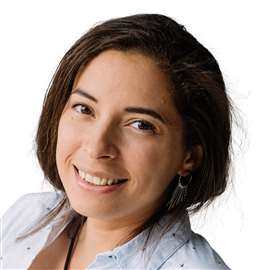How the role of a structural engineer is changing
19 October 2023
Arup’s Dr Joseph Correnza won the prestigious John Connell Gold Medal for 2023 in September. The award, from the Structural College of Engineers Australia, recognises a lifetime of achievement on multiple high-profile projects including London’s Millennium Bridge.
Talking to Construction Briefing, Dr Correnza discusses how the role of a structural engineer has changed over his 30-year career, offers six pieces of advice to young people aspiring to the role, and explains why collaboration in project teams is essential.
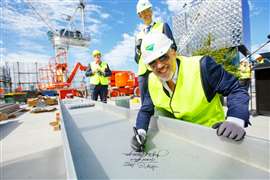 Dr Joseph Correnza at the Melbourne Quarter, Australia (Image courtesy of Arup)
Dr Joseph Correnza at the Melbourne Quarter, Australia (Image courtesy of Arup)
You have been involved in some high-profile projects over the course of your career so far. Have you noticed any significant changes in the role a structural engineer plays over that time?
The two most significant things that have changed throughout the direction of my career are the structural engineer’s design tools and design focus.
In the past, the focus of a structural engineer was responding to a post-modern design aesthetic driving honest structural expression – material character and behaviour, rationalising geometry, driving efficiency through repetition, for example the Millennium Bridge in London and the Bodegas Protos Winery in Spain.
More recently, the focus has shifted to combining structure and building performance to create better performing passive buildings that are more energy efficient and generate less waste.
Then we have the proliferation of digital tools, allowing us to explore complex structures and forms more easily, and using such digital modelling to optimise for best performance but also digital fabrication and efficient construction and utilising total building digital twins.
We need to value reuse and repurpose to better utilise existing buildings and I’m pleased to be working with Melbourne University on a reuse assessment tool for assessing the potential of reuse of existing structures when considering redevelopment opportunities. This will be a game changer helping to better inform decisions around upgrading to enable repurposing and embedding new and more sustainable materials.
How has the advance of technology changed the role of a structural engineer over the course of your career and how do you see it changing in the future?
Pioneering technology has always been part of advancing engineering. The structural principles and the physical laws of mechanics remain the same, but with technology innovation we now have ability to test options and develop solutions quickly, allowing work that could have taken three months to deliver manually to be completed in just three days.
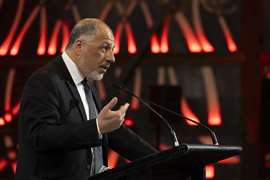 Dr Joseph Correnza (Image courtesy of Arup)
Dr Joseph Correnza (Image courtesy of Arup)
We can optimise and rationalise new and imaginative solutions more quickly and for less cost. We can interrogate total buildings and coordination via virtual construction in federated models. We can use data to provide new and better insights and drive optimum design outcomes.
The use of smart technology in manufacturing can optimise workflows, reduce costs, improve performance of materials, and drive sustainability outcomes.
Technology and digital innovation continue to create opportunities and help engineers to develop and scale solutions in tackling complex problems, for example around the challenges associated with climate change.
One area in which Arup is heavily involved is the renewable energy transition where technology is critical in ensuring government and industry can achieve the scale and pace of change need to achieve their goals.
Which projects have you worked on that you are particularly proud of and why?
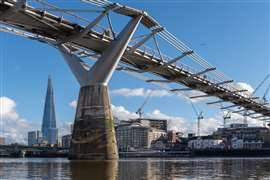 London’s Millennium Bridge (Image courtesy of Arup)
London’s Millennium Bridge (Image courtesy of Arup)
Millennium Bridge [in London, UK] has a special place in my heart. As lead structural engineer, detailing and fatigue specialist, I developed innovative systems of clamping the steel superstructure at each support arm to the four cable sets either side and accommodating the variable complex geometry at each interface.
These intricate and complex steel-cable interfaces were elegantly designed and crafted as sculptured connections, underpinned by highly technical and complex structural and fatigue assessments, resulting in a resolved and harmonious design response. Twenty years on it has become an essential element of the urban landscape and a destination in its own right.
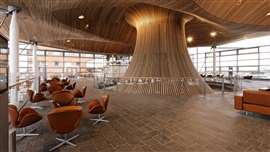 National Assembly for Wales (Image courtesy of Arup)
National Assembly for Wales (Image courtesy of Arup)
Another was leading the design and delivery of the new parliament building, the National Assembly for Wales. A unique building housing the debating chamber and support for 60 members and being highly accessible to the public.
One of the most striking features of the building is the sculpted roof, inspired by seamless natural flow and undulations representative of the forces within a folding plate structure supported on a series of pencil columns. A rationalised approach to define such a complex surface is better defined by a mathematically logical geometry, helping to streamline fabrication and construction.
The building exemplifies sustainable design, with extensive use of local materials, a ground source heating system, a biomass boiler and rainwater harvesting.
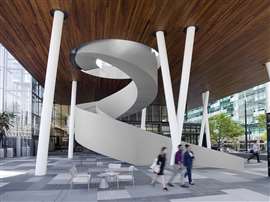 Melbourne Quarter (Image courtesy of Arup)
Melbourne Quarter (Image courtesy of Arup)
And finally, another I’m really proud of is Melbourne Quarter where I was the project director and design leader on the base build as well as the innovative, award-winning, Arup Melbourne workplace design.
From the outset the multidisciplinary team was focused on designing a space that delivered a great experience, whilst embedding sustainability and wellness at its core. For the base building, we explored a multitude of options which were adopted into the design – including structural options, central plant opportunities, parametric shading design, extensive solar power generation, NABERS improvements, high-density co-working impacts and mobile device security access.
This integrated planning and design approach ensured the building was successful in becoming the first in Australia to receive a Platinum WELL rating and 11 industry awards for best workplace, innovation, sustainability, and wellness, as well as becoming a blueprint for future commercial projects in how to bring sustainability and wellness to the heart of all design decisions.
How important is collaboration with architects, contractors and other stakeholders to ensure the success of a project?
All successful projects are founded on great teams. Having diversity of thought, bringing together individual expertise and knowledge, and ensuring everyone is equally valued in sharing their broader perspectives and opinions is fundamental to success and where this is done well, has the potential to stretch teams to the limits of their skills.
The Sydney Opera House (50 years old this October) is an Arup project that really embodies the success and shows what can be achieved with true and deep collaboration. The symbiotic relationship between architect, engineer and builder was perhaps the greatest factor in delivering such a project.
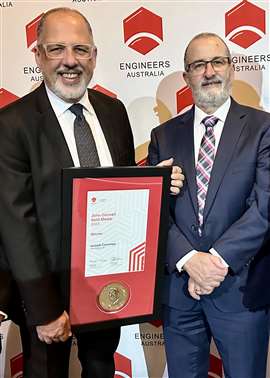 Dr Joseph Correnza (Image courtesy of Arup)
Dr Joseph Correnza (Image courtesy of Arup)
Another important element of success is the clarity, vision, courage and commitment of clients, and their level of trust in embracing the project team and enabling innovation based on their appetite. This is where the magic happens!
What do you see as some of the biggest challenges facing the construction industry in the future?
I’d say the biggest challenge to the construction industry is that the built environment generates 40% of annual global CO2 emissions.
We must completely rethink the way we design and build cities if we are going to have a chance at managing the impacts of climate change and repairing the damage to our natural environment and address social inequity.
Engineers have an increasingly important role to play in shaping a better and more sustainable future for our world. This has changed in recent years as we have seen the engineering profession evolve, from focusing on cutting edge buildings towards prioritising social outcomes via the application of technical skills for the health and wellbeing of others in fields like decarbonisation, resilience and regenerative design.
One big challenge the engineering industry must overcome is attracting enough people and skills into engineering professions as well as improving the diversity of the engineering workforce as a whole, in order to solve complex problems associated with climate change, biodiversity loss and inequality.
How does it feel to have won the John Connell Gold Medal?
I’m both delighted and humbled at the recognition and mostly from the huge number of Arup colleagues and industry partners that have reached out so generously sharing their congratulations.
As does all of our profession, I’ve held the recipients of the John Connell Gold Medal in the greatest regard. I’ve been privileged to have worked with many great engineers, architects, and designers, and am grateful for the brilliant teams and mentors who have supported and inspired me to cultivate integrated design outcome and leave lasting legacy that shapes our cities.
Dr. Joseph Correnza’s 6 pieces of advice to aspiring structural engineers
- Be inspired by everything around you – design is everywhere (good and not-so good)
- Think about yourself as the user of the outcome of design decisions
- Nature is a brilliant designer – appreciate harmony and balance
- Build strong knowledge of your discipline but be curious about other discipline and how it all comes together
- Be curious about why things are what they are – it’s revealing
- Play with Lego; Build things – carpentry, a house, time on-site, do some welding, etc
CONNECT WITH THE TEAM
